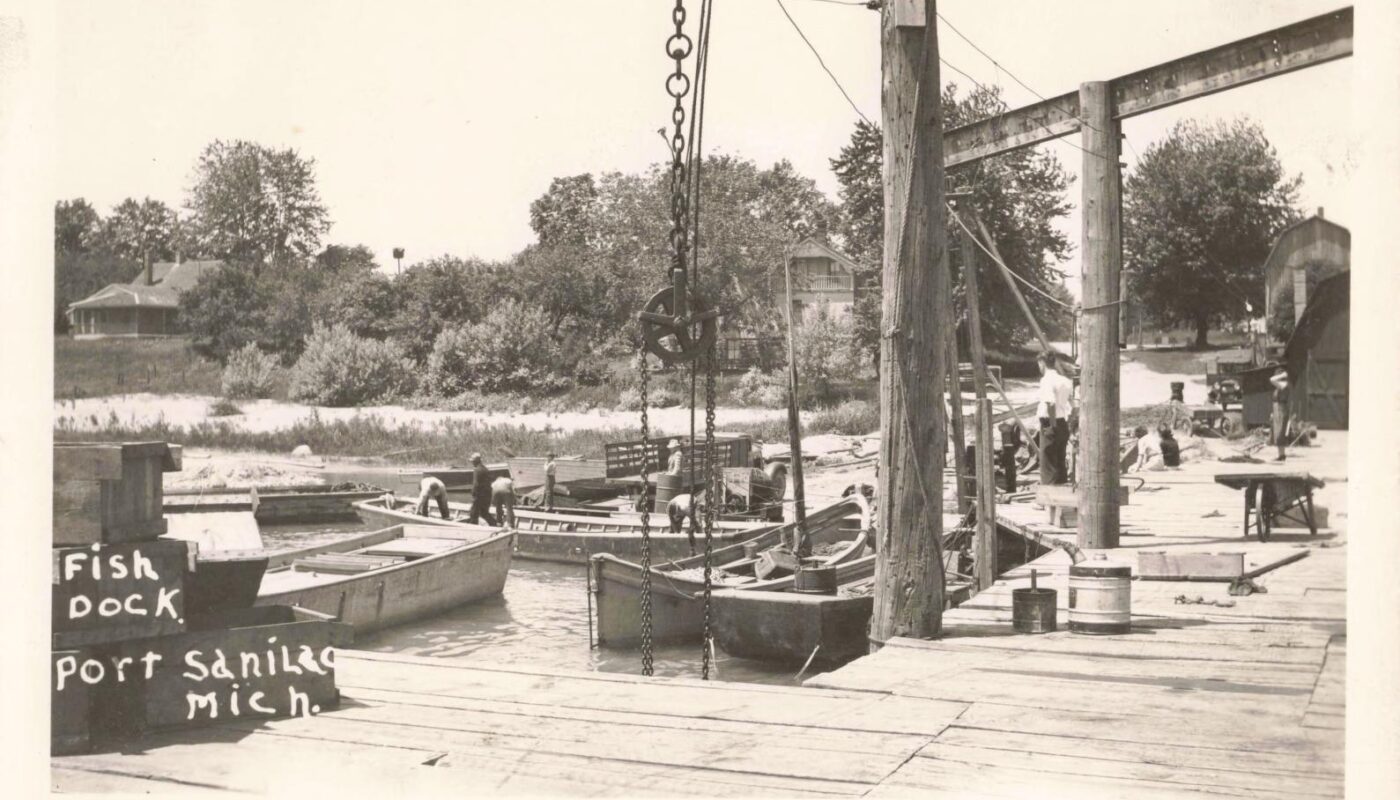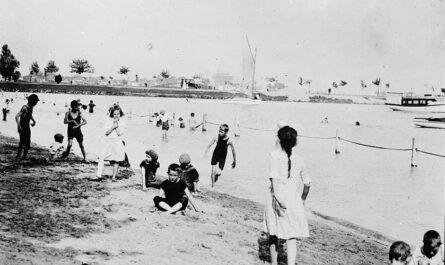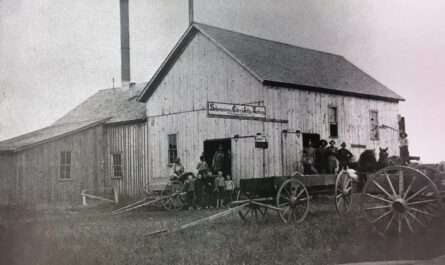Port Sanilac, Michigan, situated along Lake Huron’s shoreline, experienced a significant period of commercial fishing activity from the late 19th century through the mid-20th century. This industry played a crucial role in the town’s economic development and community life.?
Early Development and Economic Significance
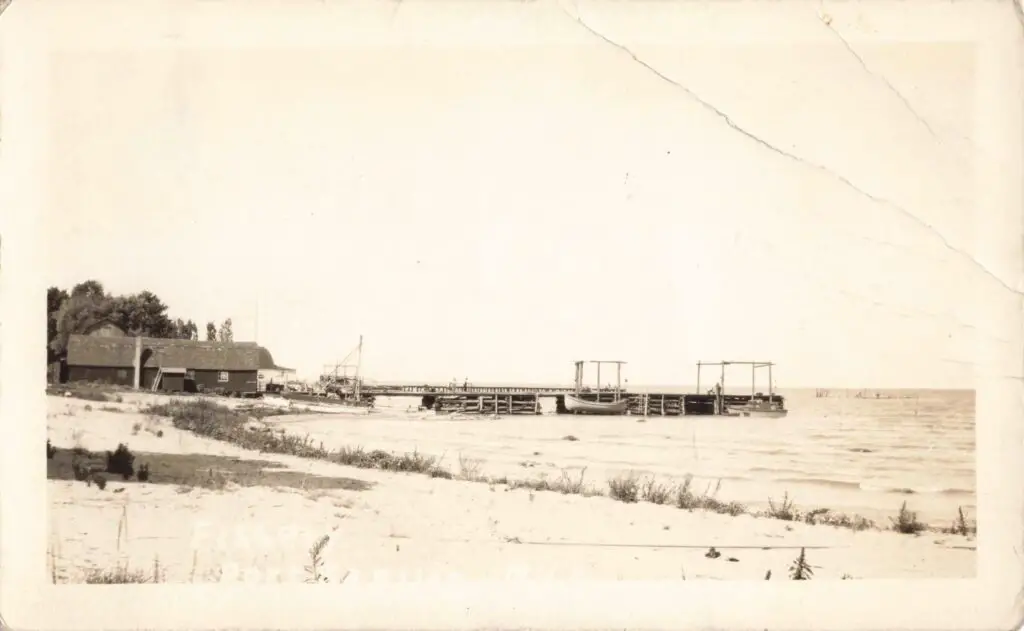
Originally known as Bark Shanty Point, the area was renamed Port Sanilac in 1857, coinciding with the establishment of shipping docks that facilitated maritime commerce, including commercial fishing. By the late 1800s, commercial fishing had become a vital component of the local economy, providing employment and supporting ancillary businesses.
Port Sanilac’s Commercial Fishing Shaped a Town
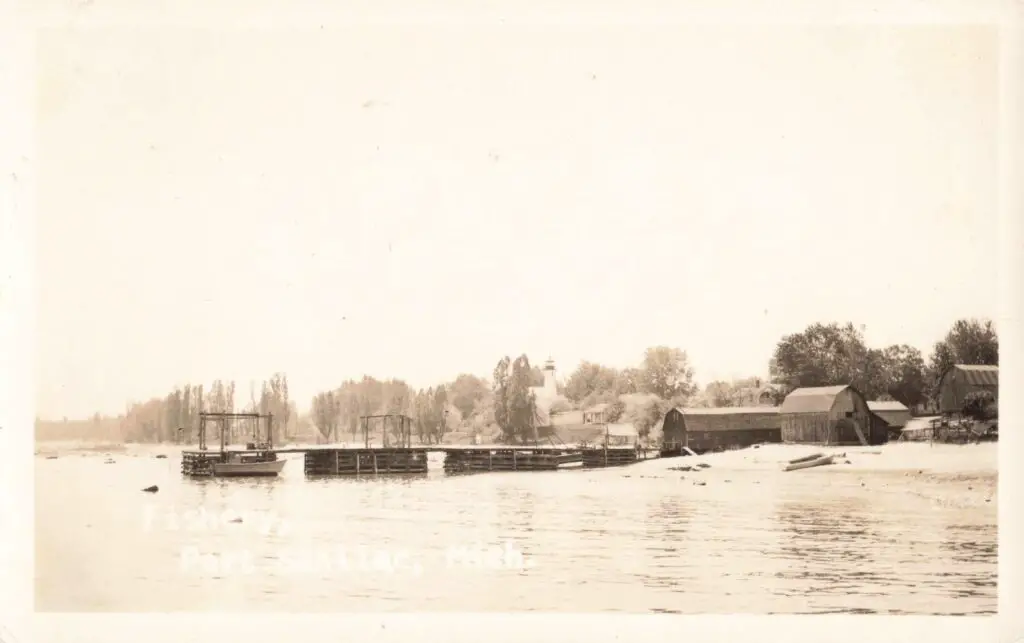
Port Sanilac’s commercial fishing industry once powered this small Michigan harbor into an economic hub. From the late 1800s through the mid-20th century, the town’s lakefront bustled with boats, fish houses, and cold storage facilities. For decades, Port Sanilac’s commercial fishing connected the bounty of Lake Huron to major cities like Detroit, Chicago, and New York.
A 1948 report from the Sanilac County Planning Committee found that seven state-licensed commercial fisheries operated along Sanilac County’s shoreline, employing about 20 men year-round. These operations used both trap and gill nets, although trap nets predominated. Fishers had to work within 50 miles of their home ports and stay within 80 feet of water depth, about four to five miles from shore.
The leading catches were pickerel, whitefish, herring, trout, and perch, which made up about 75% of the harvest. Lake Huron whitefish, in particular, were celebrated for their premium quality. Other species, caught in smaller numbers, included catfish, bullhead, Great Northern Pike, rock bass, shad, Menominee whitefish, sturgeon, and white bass. Once landed, fish were packed in fine ice and rushed to distant markets. Few were sold locally.
Regulatory Changes and Industry Decline

In 1929, Michigan enacted its first substantial commercial fishing law, requiring licenses for all commercial fishermen and establishing regulations on fish sizes, seasons, and permissible gear. These measures aimed to manage fish populations and sustain the industry. ?
However, by the mid-20th century, the industry faced challenges due to overfishing, habitat degradation, and the introduction of invasive species like the sea lamprey. These factors led to a decline in native fish populations, prompting further regulatory restrictions and a shift in focus toward recreational fishing. ?
Transition to Recreational Fishing
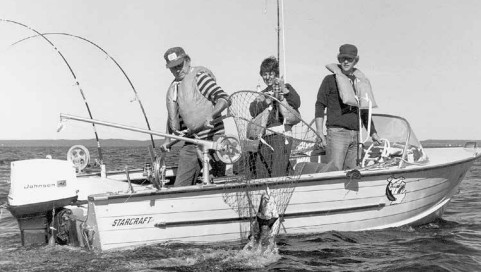
By the 1970s, commercial fishing operations in Port Sanilac had largely ceased. The town adapted by developing its harbor facilities to support recreational boating and sport fishing, capitalizing on the growing popularity of these activities. ?
Legacy and Preservation
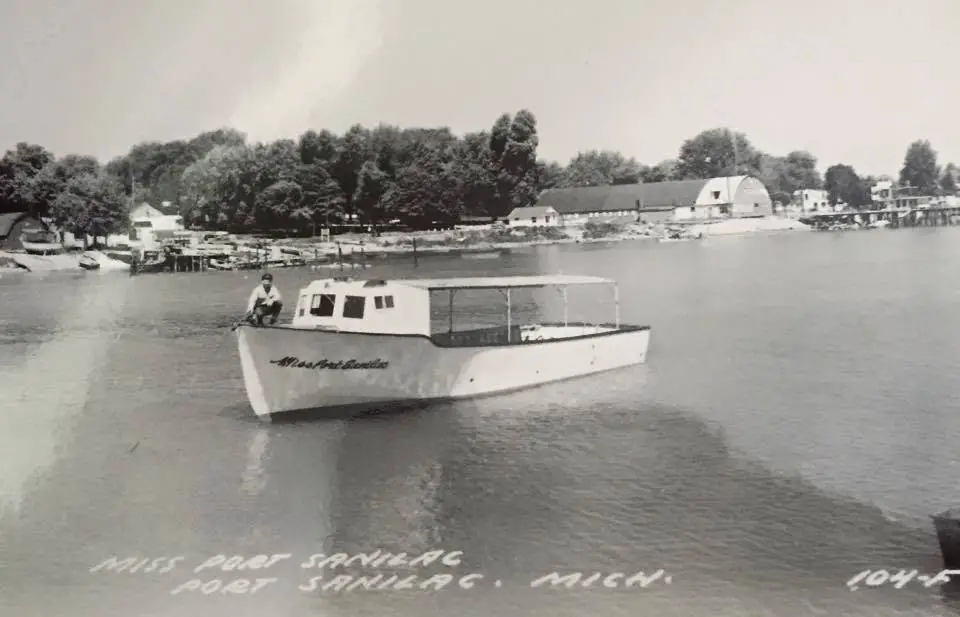
Today, Port Sanilac honors its maritime heritage through institutions like the Sanilac County Historic Village & Museum, which features exhibits on the area’s fishing history. Additionally, historic vessels such as the “Miss Port Sanilac,” a 38-foot fishing boat built in 1958, have been preserved and repurposed for educational and recreational purposes.
By 1970 the remaining Port Sanilac boats found little market. Fish processors closed or switched to other work. The old herring shanties and wharves became memories. Today the once-busy docks serve recreational boaters; commercial fishing in Port Sanilac survives mainly in local history books.
Conclusion
The history of commercial fishing in Port Sanilac reflects broader trends in the Great Lakes region, illustrating the economic importance of the industry and the challenges it faced over time. While commercial operations have ceased, the town continues to celebrate its fishing legacy through preservation efforts and community engagement.?
References
- “Port Sanilac Harbor Area Management Plan.” GovInfo, https://www.govinfo.gov/content/pkg/CZIC-tc225-p67-p67-1980/html/CZIC-tc225-p67-p67-1980.htm.?GovInfo
- “History of State-Licensed Great Lakes Commercial Fishing.” Michigan Department of Natural Resources, https://www.michigan.gov/dnr/managing-resources/fisheries/business/commercial/history-of-state-licensed-great-lakes-commercial-fishing.?
- “Sanilac County Historic Village & Museum.” Pure Michigan, https://www.michigan.org/property/sanilac-county-historic-village-museum.?
- Hardy, Michael. “Aboard the Miss Port Sanilac 1960.” Thumbwind, 15 May 2020, https://thumbwind.com/2020/05/15/aboard-the-miss-port-sanilac-1960/.?
- “Fishery Port Sanilac Mich”. https://quod.lib.umich.edu/t/tinder/x-54263/tinder-rppc-108525. In the digital collection David V. Tinder Collection of Michigan Photography. William L. Clements Library, University of Michigan Library Digital Collections. April 28, 2025.
- Portraits of Michigan History and Facts on Michigan – Prepared by the Michigan Legislature

